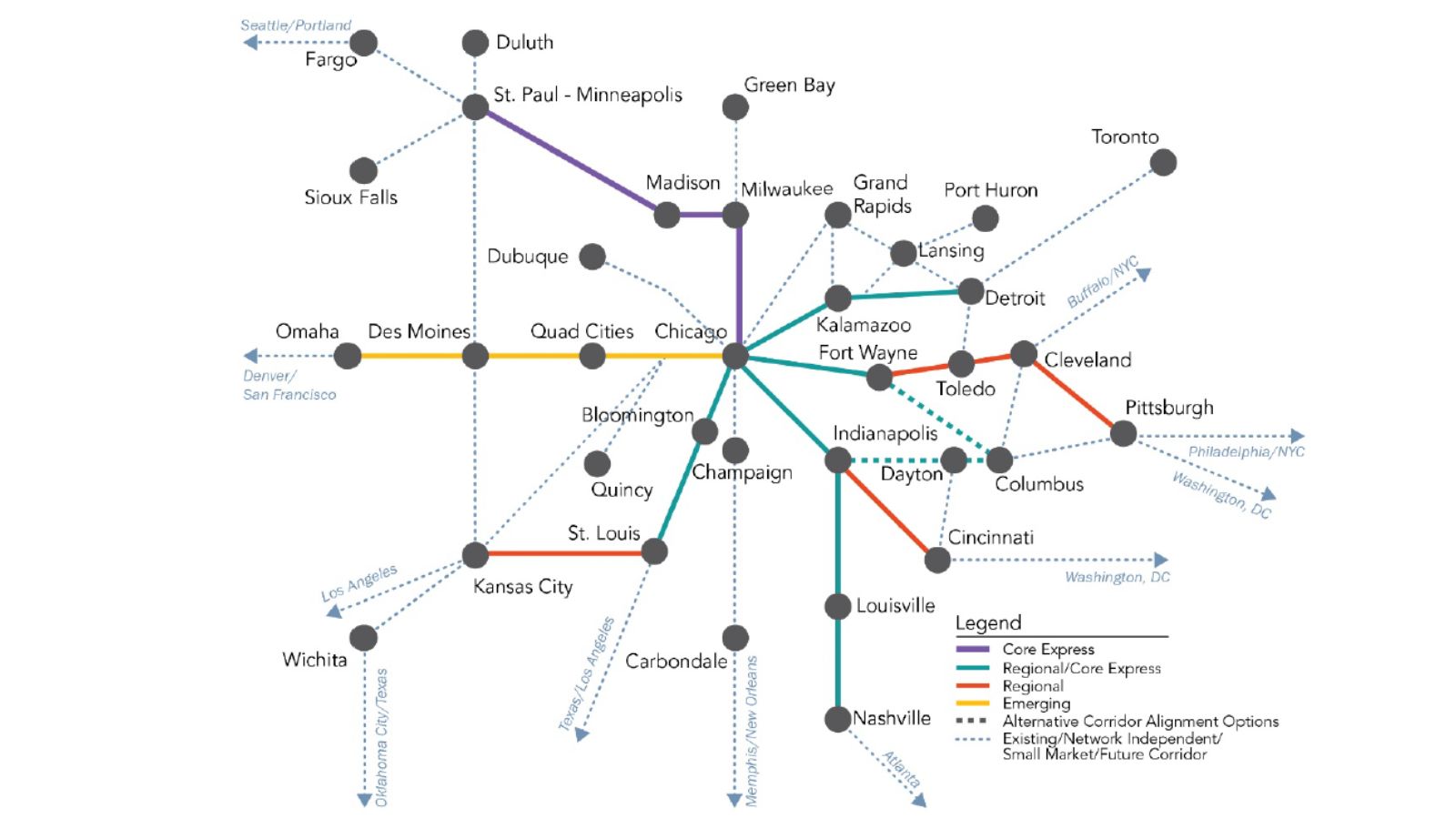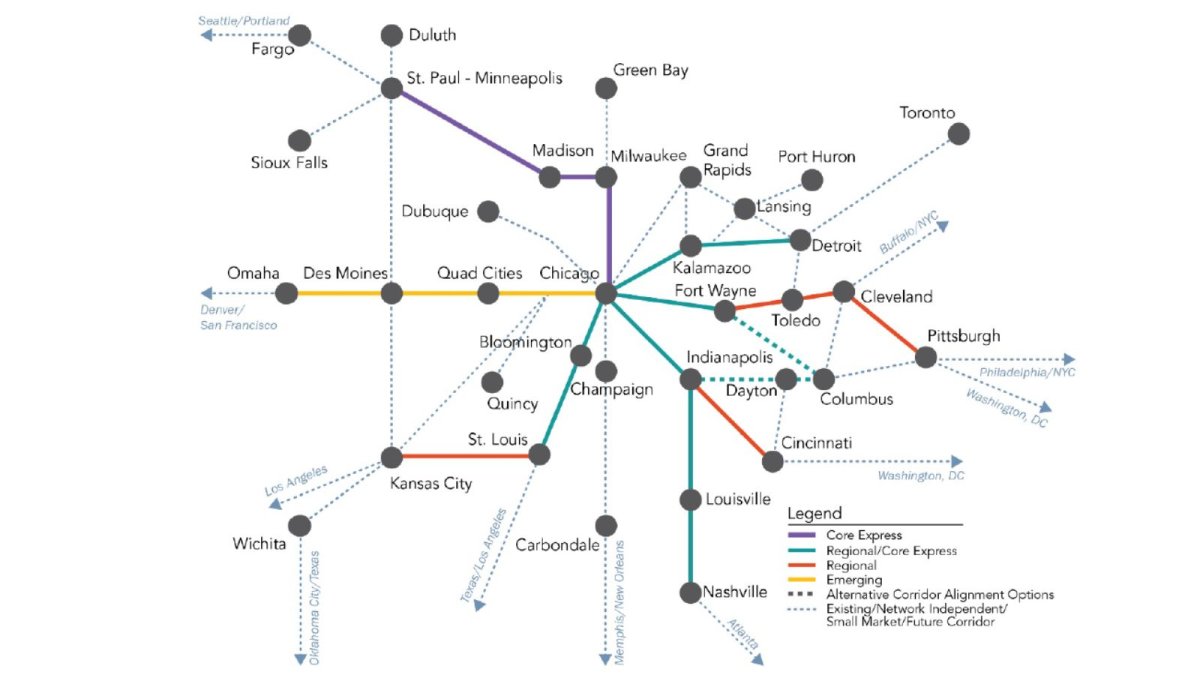
The Midwest has relatively good high-speed rail connections compared to the rest of the country, but activists are calling for the region to expand its infrastructure.
The Midwest has been described as a “gateway” for rail connections to the rest of the country because of the railways between Chicago and the East Coast, and proposals for new tracks, particularly in Illinois and Indiana, could double down on that status.
Why It Matters
Proponents of high-speed rail see the technology as an economic no-brainer; it’s clean, fast, and provides a huge boom to productivity and access for millions of travelers. However, the infrastructure requires a huge amount of time, money and political capital to build, which is why the few high-speed rail projects that are active in the U.S. have been fraught with funding difficulties and skepticism.
Getty Images
What To Know
At the core of expansion efforts is the Federal Railroad Administration’s Midwest Regional Rail Plan, which would see the steady expansion of new routes out from Chicago.
The Windy City has long been the regional hub for rail travel, with consistent trains running from Chicago through to New York.
Further, many Amtrak services from states like California and Texas make their way to Chicago rather than directly to New York, making Illinois and the Midwest one of the most important regions for future rail expansion.
The FRA’s plan centers on high-speed “pillar corridors” with endpoints in Chicago, Minneapolis-St. Paul, Detroit, Indianapolis and St. Louis.
These corridors would not only increase capacity on high-traffic routes but also unlock viability for secondary routes, such as Milwaukee to St. Louis or Indianapolis to Minneapolis, that would struggle to justify investment as standalone projects.

High-Speed Rail Alliance
The keystone of the network is a new 186-mph line connecting Chicago to Minneapolis-St. Paul via Milwaukee and Madison in Wisconsin. The plan forecasts that nearly 30 percent of all ridership in the region would pass through Chicago, with Minneapolis-St. Paul serving as the second-largest hub at more than 11 percent of projected trips.
If implemented fully, the Midwest rail network could drive ripple effects far beyond its own borders. For example, the Chicago-Indianapolis corridor may lead to future links southward to Louisville, Nashville and eventually Atlanta. This aligns with broader plans under consideration for high-speed rail from Atlanta to Charlotte and Dallas.
The 12 states included in the plan—Illinois, Indiana, Iowa, Kansas, Michigan, Minnesota, Missouri, Nebraska, North Dakota, Ohio, South Dakota and Wisconsin—represent nearly one-fifth of the U.S. population.
What People Are Saying
Railway engineer and industry expert Gareth Dennis: “If you have large, long-distance infrastructure or services, then yes, a pan-state or federal organization needs to oversee those. But much of the railroad infrastructure and many services really need to be managed at the state level.
“Of course, people’s movements often cross state boundaries. They travel left, right and center. But if you centralize too much at the federal level, the whole system becomes slow and sluggish. It simply takes too long to respond to challenges. There’s too much decision-making happening at too high a level, where it’s harder to make agile, localized choices about how everything fits together.
What Happens Next
The active high-speed rail projects continue to make progress. Their success or failure will likely define how future projects approach scale and financing.
